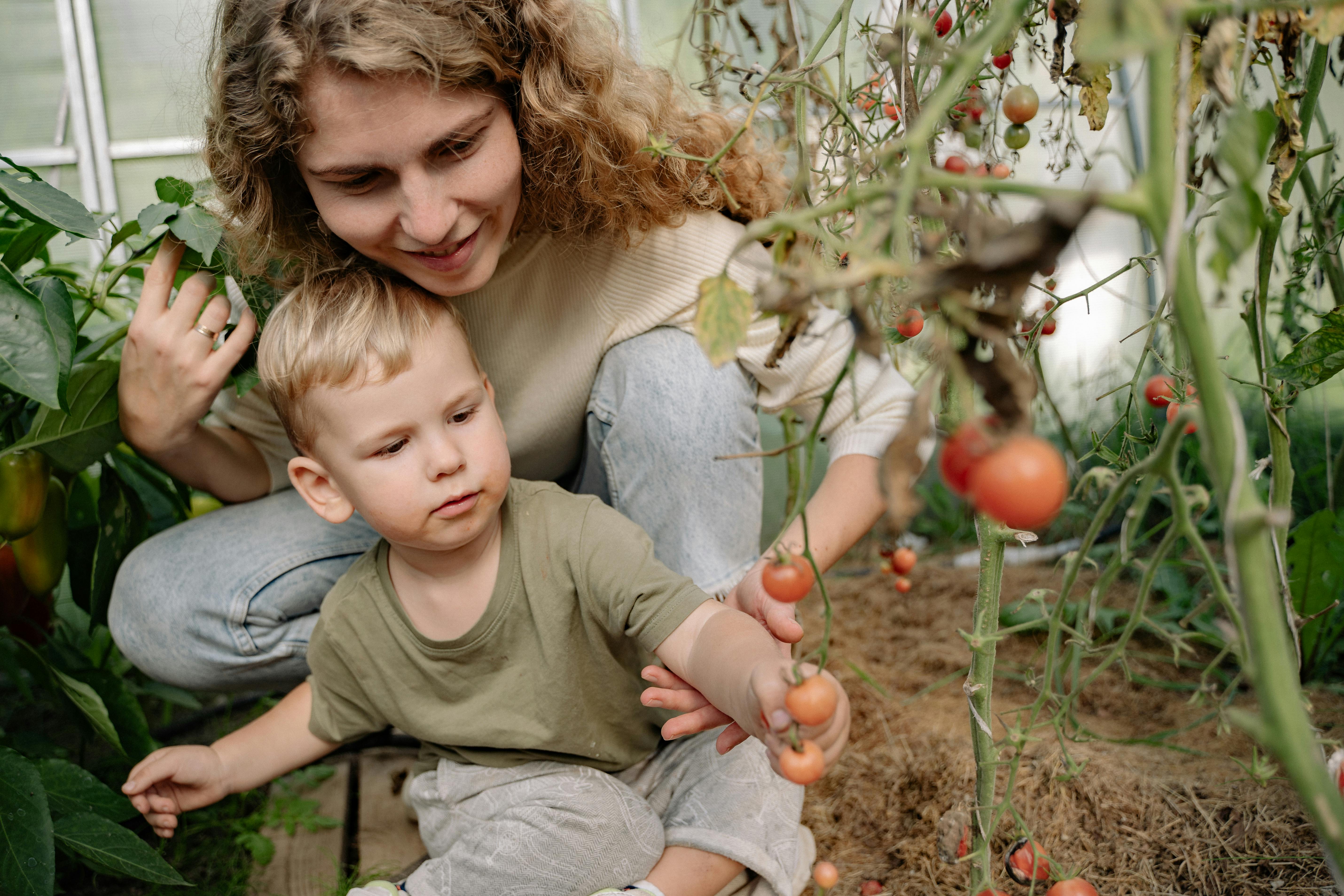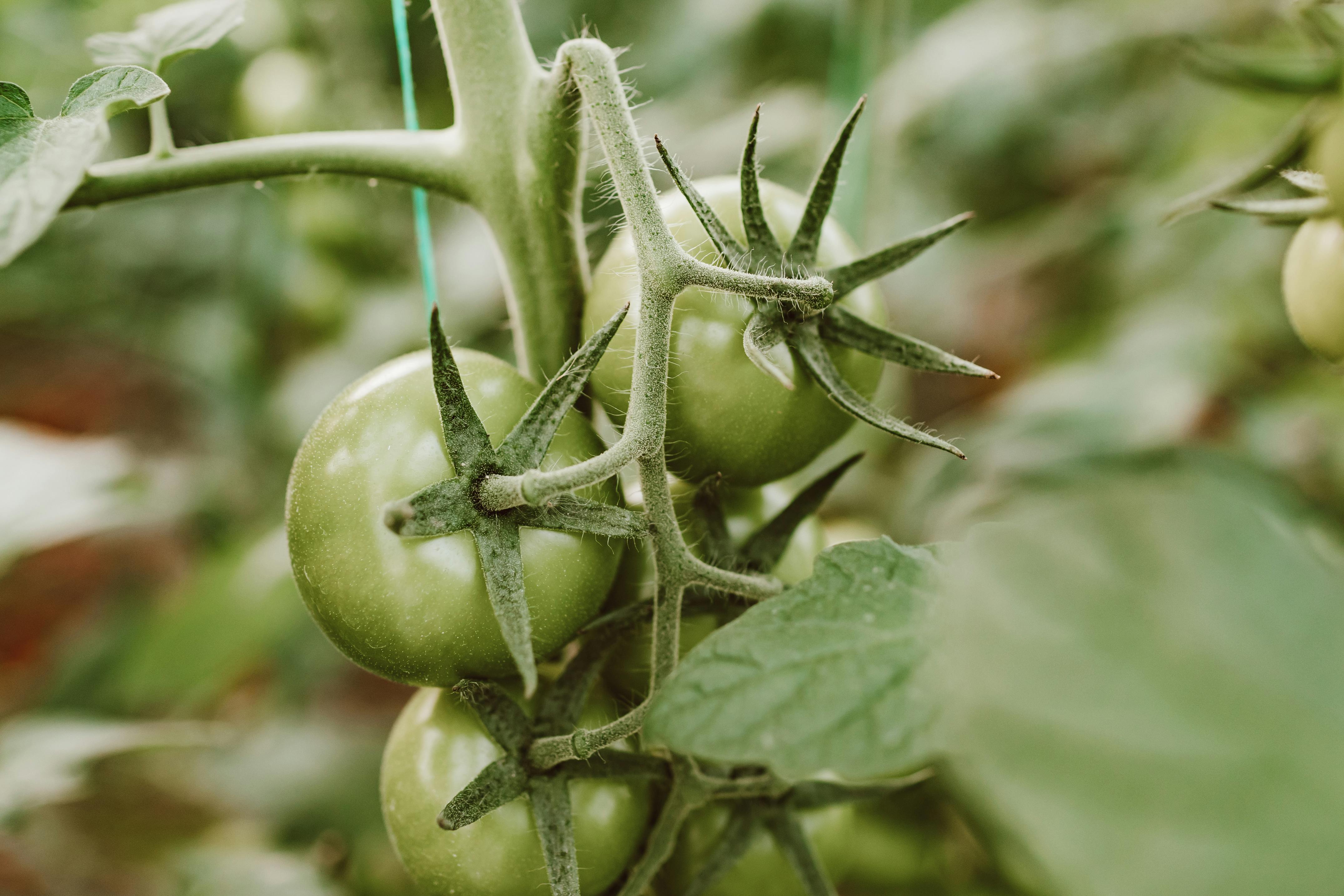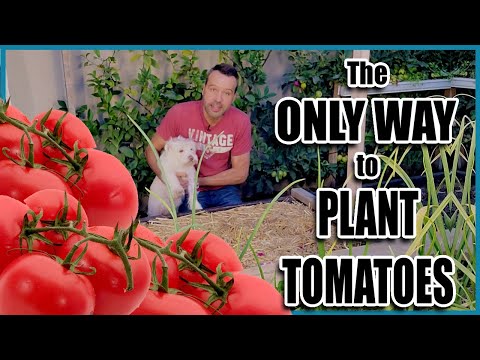Planting tomatoes is a fun and rewarding experience. Tomatoes are one of the most popular vegetables to grow, and they are also easy to grow and maintain. This guide will provide you with all the information you need to successfully plant tomatoes in your garden. You’ll learn about the best time of year to plant, what type of soil is needed, how to prepare the soil, and how to care for your tomato plants after they are planted. With a little bit of knowledge and patience, you can enjoy fresh, homegrown tomatoes all season long!1. Research the types of tomatoes available and determine which type best meets your needs. Consider factors such as climate, growing season length, and potential yield when making your decision.
2. Purchase high-quality tomato seeds or starter plants from a reputable source. Look for varieties that have disease-resistant traits and are well suited to your particular area.
3. Identify a location for planting that receives at least 6 to 8 hours of direct sunlight per day, has good drainage, and is not prone to flooding or standing water.
4. Prepare the soil by removing weeds and loosening it with a shovel or spade before planting, adding organic matter like compost if needed to improve drainage and fertility.
5. Plant your tomato plants in holes that are twice as deep as the root ball, then backfill with soil and gently tamp down around each plant to remove any air pockets. Water deeply after planting to help settle the soil around the roots.
6. Place cages or stakes near each plant and provide support as needed throughout the growing season so that plants don’t become damaged by wind or heavy fruit harvests.
7. Fertilize regularly with a balanced fertilizer such as 10-10-10 according to package instructions, taking care not to overdo it as too much fertilizer can burn plants’ delicate roots systems
8. Monitor growth throughout the growing season, paying attention for signs of disease or pests so you can take action quickly if needed to protect your tomatoes from damage
Preparing the Soil for Planting Tomatoes
When preparing the soil for planting tomatoes, it is important to make sure that the soil is rich in organic matter and well-drained. The ideal soil pH for tomatoes is between 6.0 and 7.0. If the pH is too low, it can be raised by adding agricultural lime to the soil. If the pH is too high, it can be lowered by adding sulfur or elemental sulfur to the soil. The soil should also be well-aerated, so it’s important to add compost or aged manure to improve drainage and provide essential nutrients.
In addition to making sure that the soil has a good structure, it’s important to prepare an area that will receive plenty of sunlight for tomatoes. Tomatoes need at least 6-8 hours of direct sun each day in order to produce a good crop. If possible, choose an area that will receive full sun throughout most of the day and avoid areas that are overly shaded or prone to standing water after periods of heavy rainfall.
It’s also a good idea to add fertilizer before planting tomatoes in order to give them a strong start. A slow-release fertilizer such as 10-10-10 or 8-8-8 should be used at a rate of about 1/2 pound per 50 square feet of garden space. Be sure not to overfertilize as this can lead to excess leaf growth at the expense of fruit production.
Once these steps are taken and the soil is ready, tomatoes can be planted in rows with about 24 inches between plants so they have plenty of room to spread out as they grow. After planting, mulch should be added around each plant with straw or shredded leaves in order help keep weeds down and maintain moisture levels in the soil throughout the summer months when temperatures are high and rainfall is limited. With proper care and attention, this will ensure healthy plants that produce an abundance of delicious tomatoes all season long!
Planting Tomatoes in Containers
Growing tomatoes in containers is an easy and inexpensive way to have a great harvest of tasty, fresh tomatoes. Container gardening is also a great option for those with limited space or who live in an area with poor soil quality. With a few simple tips, you can ensure that your tomatoes are healthy and productive.
Start by selecting a pot that is large enough for the tomato variety you have chosen. If you are using smaller containers, opt for a determinate variety as these will not need as much room to grow. Make sure the container has good drainage holes to allow excess water to escape and prevent root rot. Fill the container with a well-draining potting mix that is enriched with compost or slow-release fertilizer. Place the tomato plant in the middle of the container and firm it down gently with your hands.
Once planted, water your tomato plants deeply so that water penetrates all the way to the bottom of the container. Tomato plants should be watered regularly throughout their growing season, usually every other day or so depending on your climate and soil conditions. It’s important to keep soil evenly moist but not soggy; if it’s too wet, roots may rot. Add mulch around the base of your tomato plants to help keep weeds at bay and retain moisture.
Tomato plants should be given plenty of sunlight; place them in an area that receives full sun for at least six hours each day. If you live in an area with high temperatures, consider providing additional shade during midday hours when temperatures are highest. Tomatoes may also require staking or cages for support as they grow; select stakes or cages that are tall enough to accommodate your particular variety.
With proper care and attention, growing tomatoes in containers can provide you with a bountiful harvest of delicious tomatoes throughout the summer months!
Planting Tomatoes in the Ground
Growing tomatoes in the ground is a great way to ensure you have a plentiful harvest of delicious vegetables. There are some important steps to take when planting tomatoes in the ground, so make sure to follow these guidelines for the best results.
First, choose a spot in your garden that gets plenty of sun. Tomatoes need at least 8 hours of direct sunlight each day for optimum growth and production. If you don’t have access to an outdoor garden, you can also grow tomatoes in containers on your patio or balcony.
Next, prepare your soil for planting. Tomatoes prefer well-draining soil that is slightly acidic with a pH between 6 and 6.8. Work some compost or aged manure into your soil before planting to ensure it has all the nutrients needed for healthy growth.
Now it’s time to plant! Dig a hole deep enough for each plant and wide enough so that the roots can spread out easily. Place your tomato plants into the ground at least 18 inches apart and fill in around them with soil until they are firmly planted in place. Make sure to keep the root crown just above the surface of the soil but not too deep as this could cause root rot or other issues with your plants.
Once everything is planted, water your tomato plants thoroughly and add mulch around them to help keep moisture in and weeds out. During its growing season, be sure to monitor your tomato plants regularly for signs of disease or insect damage and address any issues promptly before they become serious problems.
Following these guidelines will give you a great start when planting tomatoes in the ground – but don’t forget that regular maintenance throughout their growing season is essential for healthy harvests!
Spacing Tomato Plants for Maximum Yield
Proper spacing of tomato plants is important for getting maximum yields. When planting tomatoes, it is best to space plants according to the mature size of the variety. Most varieties require between two and three feet of space in between each plant. This will allow enough room for air circulation, sunlight, and nutrient absorption. It also prevents overcrowding and competition for resources between plants. If planting in rows, it is best to space rows at least three feet apart for adequate air circulation.
When planting large varieties, such as beefsteak tomatoes, it may be necessary to give them even more room. If possible, try to give them four or five feet between each plant. This will ensure that they have enough room to spread out and get plenty of sunlight and nutrients. It will also make harvesting easier since the fruits won’t be crowded together.
In addition to spacing the tomato plants properly, it is also important to provide adequate support for the vines as they grow. Support can come in the form of stakes or trellises that are securely attached to the ground around each plant so that they can hold up the vines and keep them off the ground. Doing this will help reduce disease problems and improve yields by allowing better access to sunlight and air circulation around the tomato fruits.
Spacing tomato plants properly can be a time-consuming task but it is well worth it in order to maximize yields throughout the season. Careful consideration should be given when deciding how much space is needed between each plant as this will have a direct impact on yields at harvest time. Providing adequate support for growing vines will also help ensure maximum yields by reducing disease problems and improving access to sunlight and air circulation around fruits

Watering and Feeding Tomato Plants
Tomato plants are very sensitive to their environment and need a consistent supply of water and nutrition to thrive. Proper watering and feeding is essential for a successful harvest. Too little or too much water can lead to disease, pest infestations, or stunted growth. To ensure your tomato plants stay healthy, it is important to understand the basics of watering and feeding them.
When it comes to watering tomato plants, it is best to provide them with an inch of water per week. This can be done through rainfall or by hand-watering the soil around the base of the plant. It is important not to over-water, as this can lead to root rot or other diseases that will damage your crop. When hand-watering, avoid wetting the leaves as this can lead to fungal diseases such as blight.
In addition to adequate watering, tomato plants need a steady supply of nutrients for proper growth and development. This can be achieved through fertilization once every two weeks during the growing season. A balanced fertilization schedule should include nitrogen for healthy foliage growth, phosphorus for strong roots and stems, and potassium for fruit production. If you are unsure about which fertilizer to use on your tomatoes, consult your local nursery or gardening center for guidance.
With proper watering and feeding, you can ensure that your tomato plants remain healthy throughout the growing season. By providing them with an adequate amount of both water and nutrients on a consistent basis, you will be rewarded with a bountiful harvest at season’s end!
Staking and Pruning Tomato Plants
Staking and pruning tomato plants is an important step in creating a healthy and productive garden. Proper staking and pruning ensures the plant has enough room to grow, prevents disease, and helps keep the tomatoes off the ground, which helps to reduce rot. Staking tomato plants also allows for better airflow around the plant, which can help reduce fungal diseases. Pruning tomato plants helps to create a bushier plant with more flowers and fruit-bearing branches.
When staking tomato plants, it is important to use sturdy stakes that are tall enough to support the growing plant. The stakes should be placed next to the base of the plant about 6-8 inches deep in the soil. Tie the stem of the plant securely around the stake with string or garden twine. As the tomato plant grows, be sure to re-tie it at least once every few weeks so it stays secure on its stake.
Pruning tomato plants is beneficial for helping them stay bushy and strong. When pruning, be sure to remove any dead or diseased leaves or stems from your plant. Also remove any vertical stems that are growing up towards the sky as these will not produce any fruit. It is best to prune early in the morning before temperatures start rising too much as this will help reduce shock to your plant from pruning. It is also important not to prune too much away as this can damage your plants growth potential.
Staking and pruning tomato plants is a great way to ensure your garden produces healthy fruits while also maintaining an attractive and organized look in your garden beds. With proper staking and pruning techniques you can create a beautiful garden full of tomatoes that you can enjoy for years to come!
Deterring Pests and Diseases in Your Tomato Garden
Growing tomatoes in your garden can be a rewarding experience, but it can also be a challenge. In order to ensure a successful harvest, it is important to take measures to protect your plants from pests and diseases.
The most common pests that attack tomato plants are aphids, caterpillars, spider mites, and Colorado potato beetles. To keep these pests away from your tomato plants, you can try planting companion plants such as basil, marigolds, and nasturtiums that will naturally repel them. You can also encourage beneficial insects like ladybugs and lacewings to come into your garden by planting flowers like daisies and yarrow.
In addition to deterring pests, it is important to practice good hygiene in the garden. Make sure to remove any dead or diseased foliage as soon as possible. Sanitizing gardening tools between uses will help reduce the spread of disease-causing organisms. Watering at the base of the plant instead of overhead will help reduce the chances of fungal diseases like blight and mildew.
Finally, when planting tomatoes choose varieties that are suited for your local climate and soil conditions. Some varieties may be more resistant to certain diseases than others so it is important to do your research before planting. With these simple steps you can ensure that your tomato harvest is successful!

Conclusion
Planting tomatoes is a great way to add flavor and nutrition to any garden. With the right soil and proper care, tomatoes can provide a delicious harvest for years to come. Tomato plants require full sun, well-drained soil, and plenty of water. Tomatoes should be planted deep and spaced far apart to ensure their roots have plenty of room to grow. A good mulching is also beneficial for keeping the soil moist and preventing weed growth. With regular care, your tomatoes will bring you plenty of pleasure as you enjoy their fruits!
Tomatoes are a great addition to any garden and with the right amount of care, they’ll thrive for many seasons to come. With just a little bit of work, you can enjoy the taste of fresh tomatoes from your own backyard!

